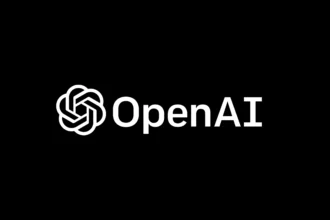How to Download Jukebox OpenAI: A Step-by-Step Guide that Even Your Grandma Could Follow!
Ah, the world of artificial intelligence! It’s a magical land where machines create adorable cat videos and sometimes compose breathtaking music that can make you feel all kinds of emotions. One such notable invention is Jukebox by OpenAI. If you’re looking for a way to download Jukebox so that you can unleash your inner Mozart or perhaps you just want to impress your friends at the next virtual karaoke night, you’ve come to the right place!
Table of Contents
ToggleWhat is Jukebox OpenAI?
Before we plunge headfirst into the digital waters of code and commands, let’s take a moment to appreciate what Jukebox actually is. Developed by OpenAI, Jukebox is a neural network capable of generating high-fidelity music in various genres and styles. Think of it as a DJ with a Ph.D. in machine learning! Its impressive capabilities allow it to create new pieces of music while also replicating the styles and sounds of famous artists.
Let’s face it, though—who among us hasn’t wanted to crank out a summer anthem in the style of the Bee Gees while still wearing pajamas? Yes, I see you raising your hand! But before we get lost in glorious visions of future musical fame, let’s tackle the first question: How do you actually download Jukebox OpenAI?
The Down and Dirty of Downloading Jukebox
Downloading Jukebox isn’t as complicated as learning to dance the cha-cha, and honestly, it requires far fewer embarrassing moments. So buckle up and follow along carefully—you wouldn’t want to trip over your own virtual shoelaces, right?
Step 1: Prerequisites—What You Need
First things first! You’ll need a GitHub account. Don’t worry; this isn’t a sorority, and you won’t need to wear matching αραγάκια (that’s Greek for pajamas!). You can simply sign up for free. Additionally, make sure you have Git installed on your computer. If you’ve been living under a rock and that’s the first time you’ve heard about Git, it’s basically a version control system that manages and tracks your code. You wouldn’t want to lose your precious music, now would you? So, jot that down on a sticky note!
The last prerequisite is a decent grasp of the command line. If your command line skills are greener than Kermit the Frog, don’t panic—there are plenty of tutorials that can help you navigate this brave new digital world.
Step 2: The Download—Git Cloning with Style!
Alright, it’s showtime! Now it’s time to roll up those sleeves and get our hands dirty in code! Open your terminal (or command prompt for those still stuck in the ’90s). Feel free to channel your inner hacker (cue the Matrix music), and enter the following mighty command:
git clone https://github.com/openai/jukebox.git
This command tells your computer to become best friends with the Jukebox repository from OpenAI’s official GitHub account. You’re essentially creating a clone of Jukebox on your local machine. How cool is that? You’re now officially a “code cloning machine,” and you didn’t even need to wear sunglasses at night!
Step 3: Navigating to the Jukebox Folder
Now that you’ve cloned the repository like a pro, it’s time to head into the Jukebox folder. You’ll want to strut your stuff into that directory like you’re strolling on the red carpet. Use the command below to navigate:
cd /content/jukebox/
If you find yourself scratching your head wondering what “cd” means, it stands for “change directory.” You are essentially telling your terminal, “Hey, let’s work here now!” Once you’ve entered that command, you’re officially on Jukebox’s turf. Don’t get too comfortable, though; we’ve still got more ground to cover!
Step 4: Setting Up Your Environment—Installing Requirements
Think of this step as setting the stage for your musical masterpiece. To get Jukebox up and running, you will most likely need to install several dependencies. Trust me when I say they aren’t as scary as they sound! You’ll probably need Python, PyTorch, and other libraries. Here’s a general command to set up your environment:
pip install -r requirements.txt
Since “requirements.txt” is the ultimate shopping list (but for code), your terminal will fetch all the necessary packages and libraries needed to let Jukebox break into song. If only it were that easy to get your shopping done at grocery stores! “Sorry, I can’t help it. Must download my groceries with a simple command.” Try that at your next visit to your local supermarket, and let us know how it goes!
Step 5: Run the Code—Time to Jam!
At this point, if you’ve followed all these steps diligently, congratulations! You’re nearly ready to let Jukebox serenade you. Now, you can use various commands to start generating music. For instance, if you want to generate a song with a specific genre and artist, you’d tap into the maybe slightly mystical realm of command lines once more:
python jukebox/example.py
But be careful with those settings! One incorrect parameter and you may end up with an AI-generated polka rendition of “Let It Be.” Don’t say I didn’t warn you. Who knows? It might end up being a viral hit!
Additional Resources: Keeping the Groove Alive
Now that you’re in the groove, if you find yourself feeling overwhelmed or curious for some extra tips, fear not! Consider checking out the official documentation on the Jukebox GitHub page. Seriously, if you’ve got questions, they’ve got answers. Think of it as the Wikipedia for music AI—except, you know, way cooler and without the endless rabbit holes about avocados.
- Jukebox GitHub Page
- Towards Data Science: A Guide to Download OpenAI’s Jukebox
- Analytics Vidhya: Jukebox – An AI Music Generator
Common Pitfalls: Avoiding Musical Mishaps
Like a musician hitting a bad note during a big concert, you might encounter a few hiccups along the way. Here are some common pitfalls to avoid:
- Not Enough Disk Space: Jukebox can be a memory-hog. Make sure you clean up any unnecessary files or that infamous collection of cat pictures—you can live without some of them.
- Poor Command Line Skills: If you’re not comfortable with command line interfaces, take the time to familiarize yourself with the basics. Trying to wing a command may lead you to inadvertently summon Cthulhu instead of a catchy tune.
- Running the Wrong Version of Python: It’s important to use compatible versions of Python. If you find yourself deep in dependency hell, make sure you double-check compatibility!
Final Thoughts: Rock on with Jukebox!
So there you have it! You officially know how to download Jukebox OpenAI and find yourself on the other side of the code, where music flows as freely as the coffee at a developer conference (seriously, those things are basically caffeine conventions). Remember, the best way to learn is by doing—so don’t be shy! Dive right in and start creating something beautiful. Who knows? You might just end up the next big hitmaker of the digital era. Best of luck, and may your tunes always be in perfect harmony!
Now go forth, download Jukebox, and let the music—or should I say, AI-generated tunes—commence! And if you ever run into trouble along the way, just refer back to this guide, and you’ll be golden.


